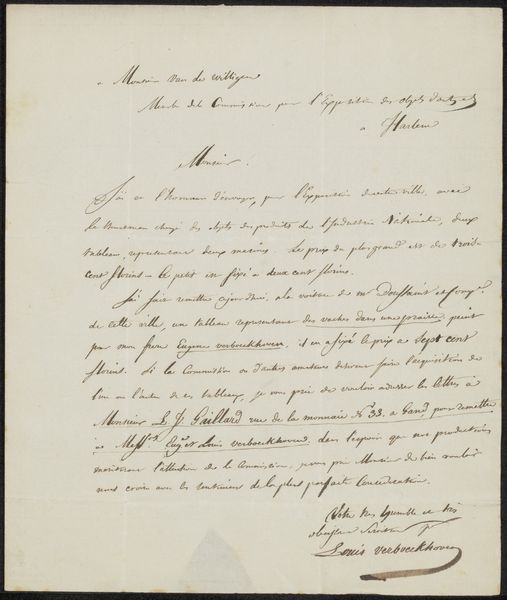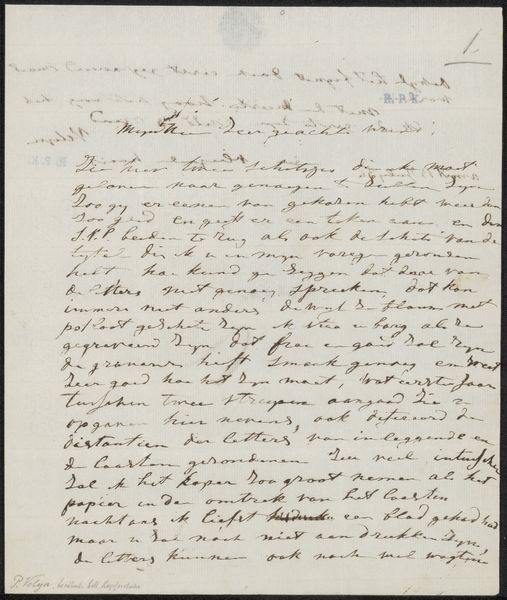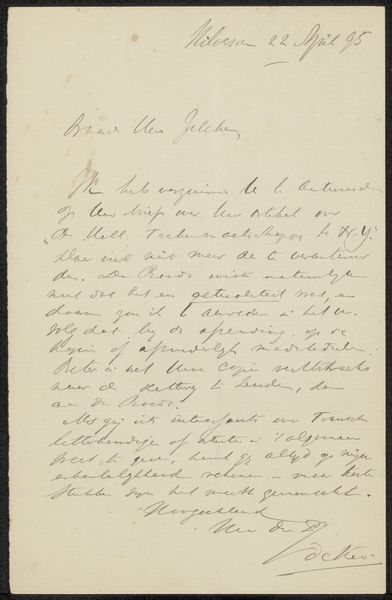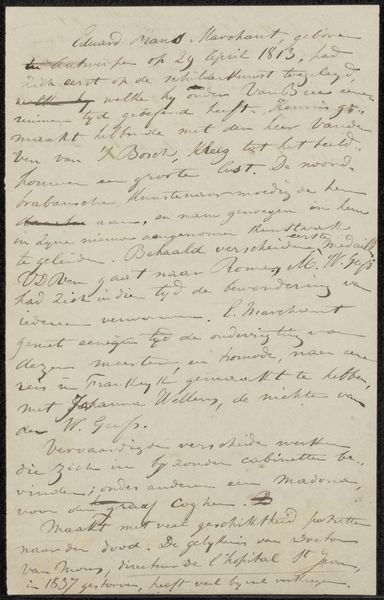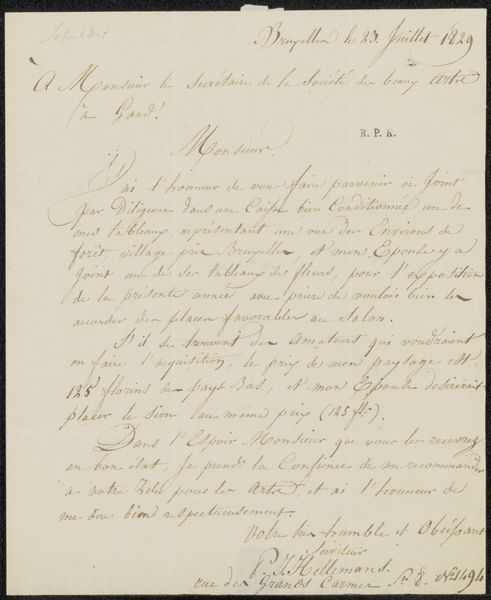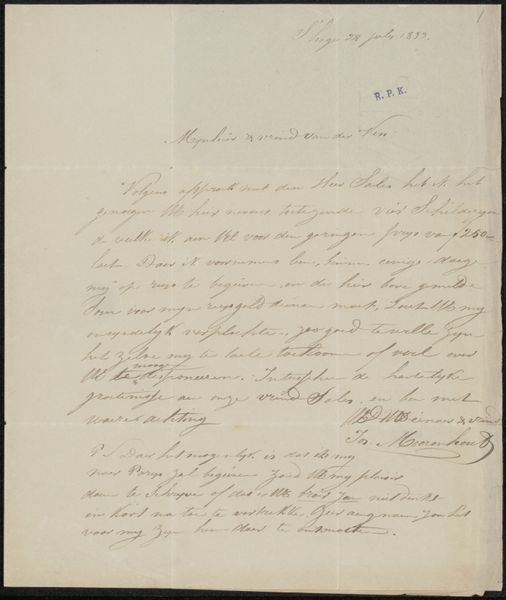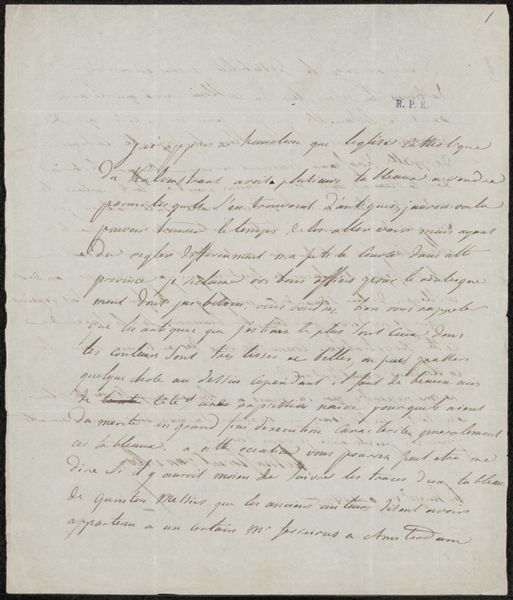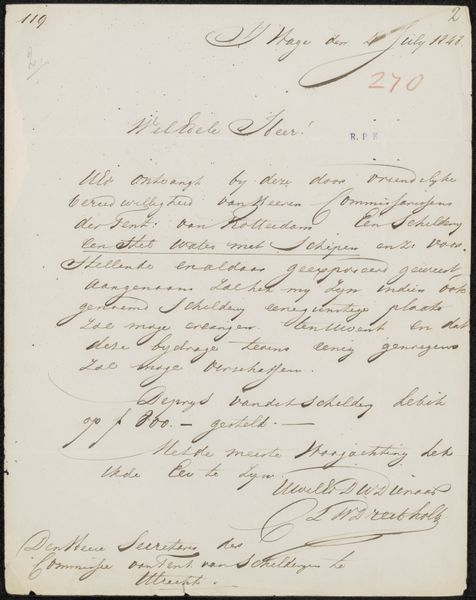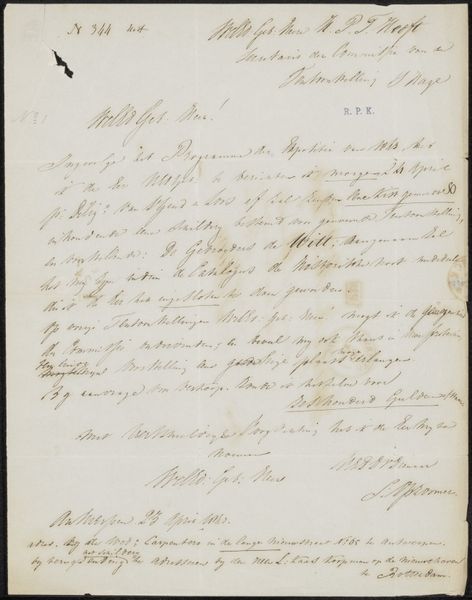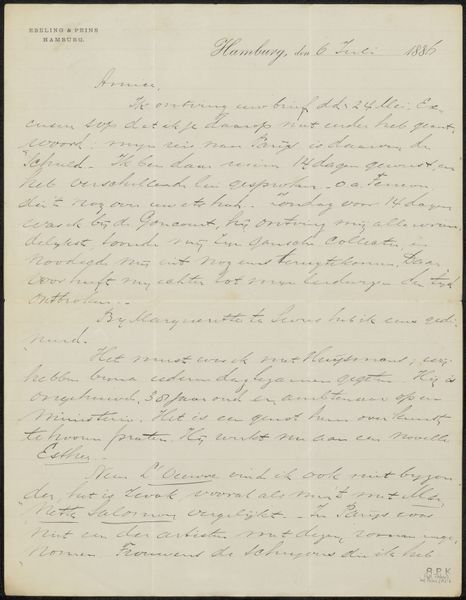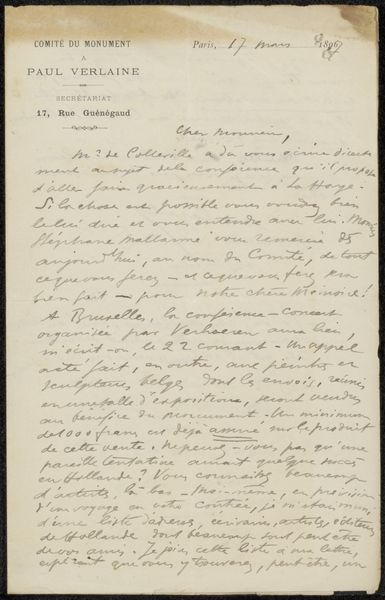
drawing, mixed-media, paper, ink, pen
#
drawing
#
mixed-media
#
ink paper printed
#
incomplete sketchy
#
hand drawn type
#
paper
#
personal sketchbook
#
ink
#
ink drawing experimentation
#
pen-ink sketch
#
ink colored
#
pen work
#
sketchbook drawing
#
pen
#
sketchbook art
Copyright: Rijks Museum: Open Domain
Editor: Here we have "Brief aan Johannes Jacobus Franciscus Wap," possibly from 1833-1838, currently housed in the Rijksmuseum. It's a mixed-media work consisting of pen, ink, and printing on paper. It appears to be an unfinished letter or sketch. What strikes you about this piece? Curator: The intrigue lies in its formal elements. Notice the delicate, almost hesitant lines of the penmanship. The texture of the paper itself contributes to the sense of immediacy and incompleteness. It prompts us to consider the artist's process and the relationship between form and content. Are we seeing a finished work or a glimpse into something more? Editor: I see what you mean. The variations in the ink, the darker and lighter areas, really create a visual rhythm despite it just being text. Is the content of the letter at all relevant? Curator: Perhaps, but focus instead on how the script interacts with the space around it. Observe the gestural quality of the handwriting; how it rises and falls across the page. Consider the negative space—its contribution to the overall composition. These elements are critical in the construction of its meaning. The letterform itself, irrespective of semantic content, functions as the subject. Editor: So, by focusing on its intrinsic visual features, we understand its meaning without ever reading the words? Curator: Precisely. The artwork’s essence is discovered through analyzing these design elements alone. This method of seeing shifts away from only the descriptive nature and redirects the viewer to the intrinsic structural form. Editor: That's a fascinating perspective. It really changes how I look at a seemingly simple letter. Thank you! Curator: Indeed. Shifting perspectives often illuminates the most enriching features.
Comments
No comments
Be the first to comment and join the conversation on the ultimate creative platform.


